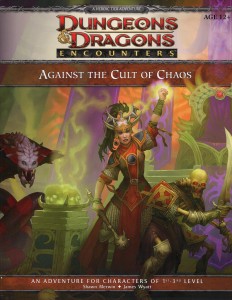While the Dungeon’s Master team enjoys some well-deserved vacation time, we’re breaking out the greatest hits and shining a spotlight on a few of our favourite articles from 2012. We’ve searched for hidden gems that our newer readers might have missed and our long-time readers will enjoy reading again. Enjoy a second look at these greatest hits from Dungeon’s Master.
We’ve written a lot about minions here at Dungeon’s Master. We like minions… a lot. As DMs, as players, and as bloggers, we have an unhealthy obsession with minions. There’s just something to be said for monsters that fall with a single hit.
As a player when I see that the party is outnumbered 2:1 I know we’ve got a tough fight in front of us. When the combat ends and the party stands victorious it feels good. We did our job as heroes and defeated the bad guys. So what that some of them were minions, they were all out to kill us. And therein lays the heart of this article.
A monster is a monster and it has the power and opportunity to kill the PCs if they do nothing. The fact that it’s got only 1 hit point shouldn’t matter. If you see an Orc with a sword running at you do you really care if he has 1 hit point or 100? No. You get out of the way or try to stop him before he can reach you. If a single arrow drops him, great; if it takes seven arrows that’s less great.
The point is that players need to try and put themselves into their characters’ shoes more often. Stop looking at the map and minis as a player and look at it as a character. Don’t assume that some monsters (minions) are less important or less threatening than other monsters. As long as the monsters are standing consider them a threat and don’t let up until every one of them, minion or otherwise, is down.
DMs try using some of the tips we mention in the article below to disguise your minions and keep the players for easily distinguishing them from the more powerful monsters. When the players don’t know which monsters are minions they treat them all equally and consider them all deadly. This mentality makes combat encounters a lot more interesting and enjoyable for everyone.
From June 26, 2012, Dungeon’s Master once again presents: Minions: Full Disclosure.
 After a short break in January the D&D Encounters public-play program returns with season 12, Against the Cult of Chaos on February 6.
After a short break in January the D&D Encounters public-play program returns with season 12, Against the Cult of Chaos on February 6.